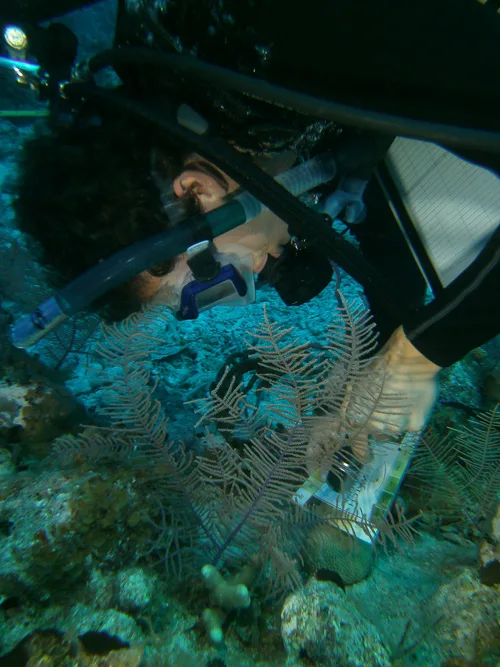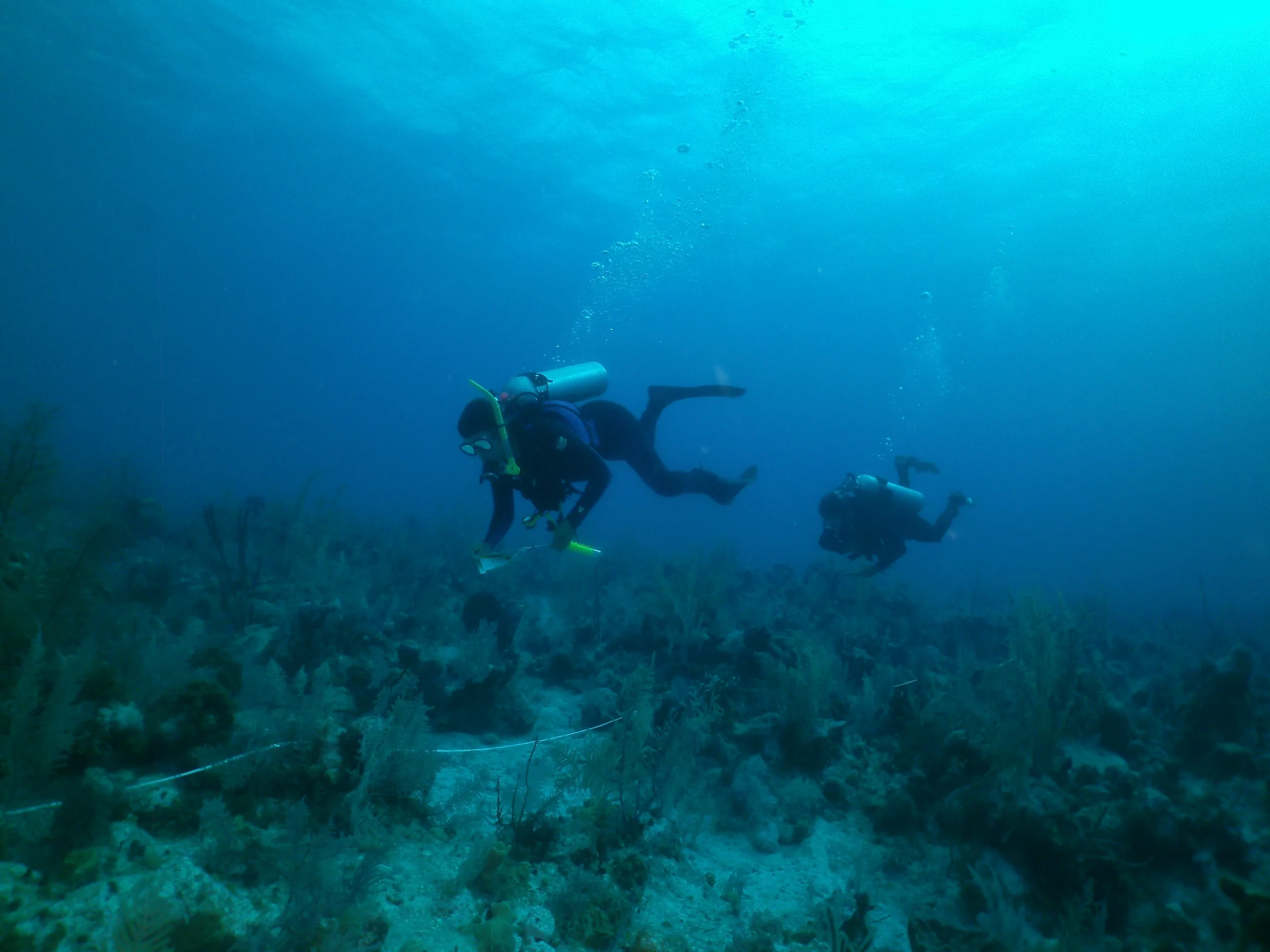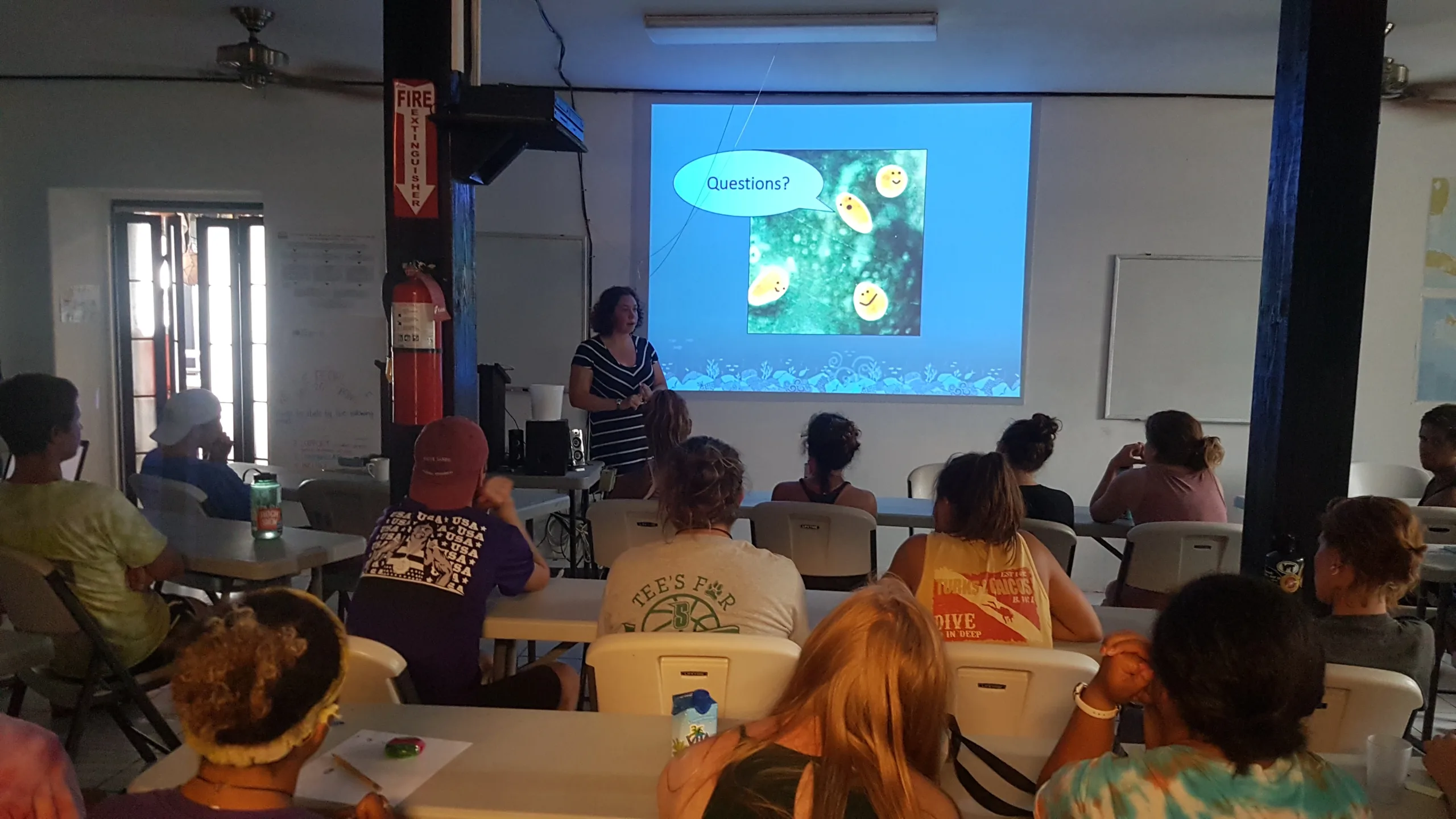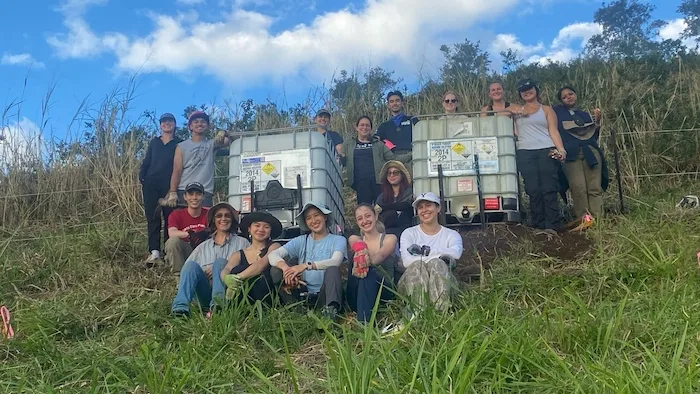Wrapping Up the Semester in TCI
We’re in the thick of it with Directed Research. Everything has led up to this point – learning about local marine species and how they interact; understanding the value of marine protected areas and how resources are used; and identifying how tourism affects South Caicos. As the semester draws to a close, it is inspiring to look back at where we started and where we are today. Just 3 months ago, wide-eyed students arrived on South for an adventure which they will carry with them through their lives. They have experienced and learned about reefs, caught and tagged turtles and sharks, listened to fisherman’s stories, and grown close to a community which depends on their data collection. Many have learned to SCUBA dive and are using their new skills to collect valuable data.
This semester I was again fortunate to advise three students on their Directed Research. Individual projects included identifying long-spined sea urchin (Diadema antillarum) population densities (Teddy Galgano, St. Michael’s College); assessing local coral bleaching (Ben Charo, Swathmore College; Photo 1); and identifying differences in fish diversity (Liz Miller, Bard College; Photo 2). Results are part of a long term program to assess local changes in our reef systems with respect to anthropogenic factors. The days are long but the rewards are great.

Photo 1

Photo 2
This semester we were fortunate to welcome two visiting researchers. Stephan Burns from Ghent University is assessing shark species diversity and relative abundance in marine protected areas using baited remote video stations (BRUVS). This research is part of Dr. Henderson’s collaboration with the Global Finprint Project (www.globalfinprint.org). Hannah Reich (SFS CMRS alumna Fall 2013) returned to South Caicos to quantify and describe Symbiodinium communities associated with reef-building corals around South Caicos with a focus on host-specificity, depth zonation, and seasonal fluctuation of Symbiodinium communities (Photo 3 – sub samples taken to Penn State for analysis). As part of her visit, she presented some of her recent research at Penn State University that focuses on climate change and coral symbionts (Photo 4).

Photo 3

Photo 4
Through the generous support of The Curtis and Edith Munson Foundation, Dr. Henderson has begun using acoustic tags to track turtles and sharks around South Caicos (Photos 5 and 6). Also as part of this funding, interns this semester visited turtle nesting beaches to monitor temperature and profile, both affected by long term changes in climate AND recorded migrating humpback whale songs.

Photo 5

Photo 6
In addition to their hard academic work, students and staff worked together to provide a successful outreach program this semester which included swimming lessons, hands-on science, a new mural at the Iris Stubbs Elementary School, and research trips to collect water quality data. We also welcomed a visit from alumnus Jeffery Back, Kicks 4 Caribya, and his team from Cornell University who again donated boxes of sporting goods to the community and ran a soccer clinic for local kids (Photo 7).

Photo 7
I have watched amazing friendships develop in a group supportive of each other both in the classroom and the field. Soon I will see a group of people departing who have grown to know and love the marine resources and people of South Caicos. We wish everyone the best of luck and hope you come back to visit!
Related Posts

Restoration on a Cinder Cone: A Syntropic Story

